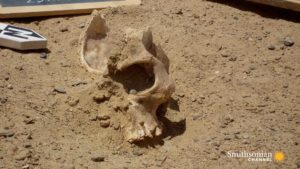
In a groundbreaking discovery, Renae and her team have stumbled upon a prehistoric cemetery unlike any other, raising intriguing questions about the origins of zoos. Situated at an ancient Egyptian site, this extraordinary burial ground, dating back over six thousand years, predates even the invention of writing, the potter’s wheel, and the majestic pyramids.
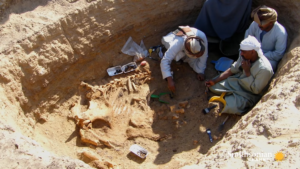
Renae proposes a bold hypothesis: this site could be the world’s first zoo. The evidence is compelling; wild animals from across the continent were sourced, kept in captivity, and nourished by humans. Astonishingly, this collection of captive animals became integral to Egypt’s religious iconography, buried alongside early rulers.
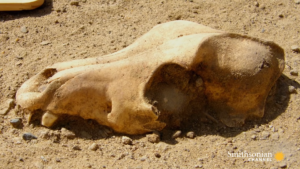
By examining the dates of the animals’ final meals, researchers have unveiled a chilling revelation—the animals were not natural deaths but were systematically slaughtered. Leopards, baboons, oryx, crocodiles, and ostriches were among the sacrificed creatures buried alongside rulers.
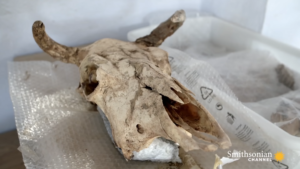
Renae suspects a unique ritual tied to rulers’ deaths, where captive animals were killed and interred with them. This practice aimed to transfer the mystical power of the animals to accompany the ruler in the afterlife. Yet, the ritual extended beyond animals, as evidence points to the mass slaughter of women and children during these royal funerals.
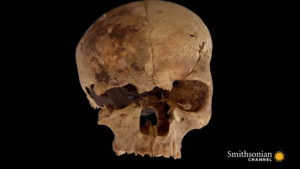
The bones from the graves reveal a disturbing tradition of mass human and animal sacrifices marking the passing of rulers. The funeral complex, with posts in the ground and remnants of colored wood, once showcased unrivaled grandeur in prehistoric Egypt. Positioned like a protective belt surrounding the central tomb, the arrangement of human and animal burials paints a vivid picture of a lavish and unparalleled funeral complex, shedding light on an ancient Egyptian custom that raises profound questions about the origins of zoos and their symbolic significance in the afterlife.




